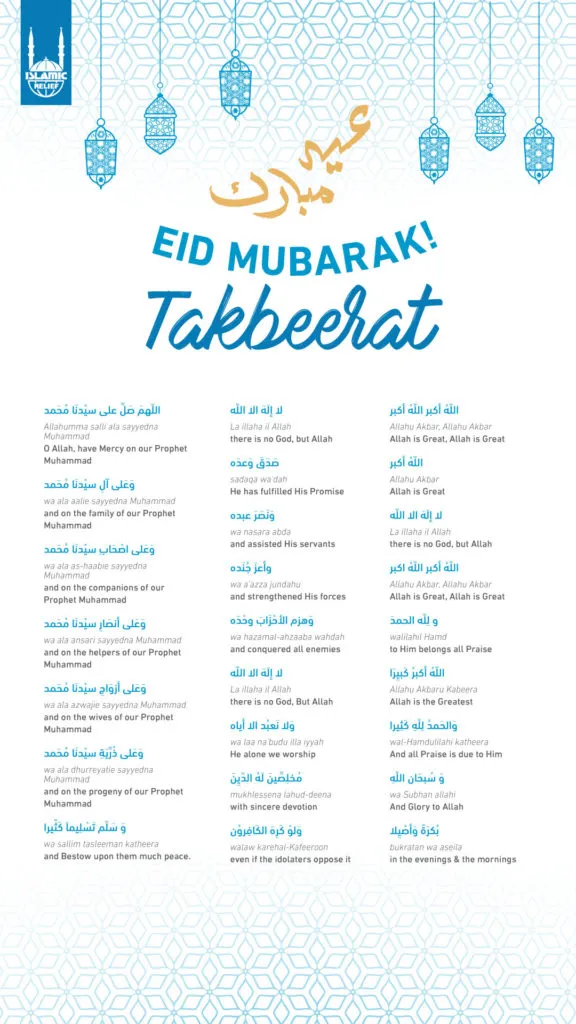Praying Eid Prayer at Home: A Step-by-Step Guide

Eid is a time of joy, celebration, and gratitude. It’s a special occasion marked by prayers, feasts, and togetherness. While Eid prayer is traditionally offered in congregation at a mosque or Eidgah, there are times when praying at home becomes necessary. If you find yourself unable to join the communal Eid prayer, this comprehensive guide will take you through the steps of performing Salat al-Eid in the comfort of your home.
The Significance of Eid Prayer
Salat al-Eid is a significant act of worship in Islam. Its importance is emphasized by its classification as either a Sunnah, Wajib (required), or Fard Kifaya (communal obligation), depending on the specific Islamic school of thought (madhhab) you follow. Regardless of the classification, offering Eid prayer is a beautiful way to express gratitude to Allah for his blessings.
Getting Ready for Eid Prayer
Before you begin your prayer, take some time to prepare yourself both physically and spiritually.
When to Pray
- Eid prayer is performed after the sun has fully risen, so it’s not offered immediately after Fajr.
- The prayer should be completed before the sun reaches its highest point in the sky (Zawaal).
- A good rule of thumb is to offer Eid prayer between 7 am and 12 pm.
How to Prepare
- Purify Yourself: Begin your Eid morning by taking a shower (Ghusl). This act of cleansing is a Sunnah (recommended practice) and adds to the sanctity of the day.
- Dress Your Best: Choose your finest clothes to wear for Eid prayer. It’s a celebration, so feel free to express your joy through your attire.
- Dates for a Blessed Start: Eating dates after your prayer is a Sunnah. It’s a sweet and wholesome way to commence your Eid festivities.
Performing Eid Prayer: A Step-by-Step Guide
The Eid prayer is unique in its structure. Let’s break down the prayer method according to different Islamic schools of thought:
Hanafi School of Thought
- Begin with Takbir: Stand and say “Allahu Akbar” (Takbeerat al-Ihram) to commence the prayer.
- Three Additional Takbirs: Before reciting from the Quran, say “Allahu Akbar” three more times.
- Recite Surah Al-Fatiha: Begin your first Rakah (unit of prayer) by reciting Surah Al-Fatiha, followed by another Surah. The Sunnah is to recite Surah Al-Alaa after Al-Fatiha in the first Rakah.
- Ruku and Sajdah: Perform one Ruku (bowing) and two Sajdahs (prostrations) as you would in a regular prayer.
- Second Rakah: After rising from the second Sajdah, begin your second Rakah by reciting Surah Al-Fatiha followed by another Surah. The Sunnah for the second Rakah is to recite Surah Al-Ghashiya or Surah Qaf followed by Surah Qamar.
- Three More Takbirs: After reciting the Surah, say “Allahu Akbar” three times.
- Final Takbir and Ruku: Say “Allahu Akbar” one more time and then perform Ruku.
- Complete the Prayer: Continue with two Sajdahs and the final sitting (Tashahhud) as you would in a regular prayer.
Maliki School of Thought
- Opening Takbir and Six More: Begin with Takbeerat al-Ihram (“Allahu Akbar”), followed by six additional Takbirs. It is Sunnah to pause briefly after each Takbir to allow those praying behind you to follow along.
- Recitation: Recite Surah Al-Fatiha and another Surah of your choice.
- Ruku and Sajdah: Perform Ruku, followed by two Sajdahs.
- Rise for the Second Rakah: Stand up for the second Rakah, saying one Takbir.
- Five Additional Takbirs: Say “Allahu Akbar” five more times.
- Complete the Second Rakah: Continue with the second Rakah as you normally would.
Shafi’i School of Thought
- Seven Takbirs: Start with seven Takbirs (“Allahu Akbar”).
- Recitation, Ruku, and Sajdah: Recite Surah Al-Fatiha, followed by another Surah, then perform one Ruku and two Sajdahs.
- Rise for the Second Rakah: Stand up for the second Rakah, saying one Takbir.
- Five Additional Takbirs: Say “Allahu Akbar” five more times.
- Complete the Second Rakah: Proceed with the second Rakah as usual.
Eid Takbeerat: Extending the Celebration
After completing your Eid prayer, it is Sunnah to recite the Takbeerat (Allahu Akbar) after each prayer for the next three days.
 alt=Eid Mubarak graphic
alt=Eid Mubarak graphic
Eid at Home: Making It Special
While praying at home may differ from the communal experience, there are ways to make it equally meaningful.
- Create a Serene Space: Dedicate a clean and quiet area in your home for prayer. Consider adding a prayer rug or a clean cloth to designate the prayer space.
- Decorate Your Home: Infuse your home with the spirit of Eid by putting up decorations.
- Prepare Festive Food: Eid is a time for feasting. Prepare traditional Eid dishes or try new recipes to share with your family.
Embrace the Spirit of Eid
Remember, the true essence of Eid lies in gratitude, reflection, and sharing joy with loved ones. Whether you pray in a mosque or in the comfort of your home, open your heart to the blessings of this special occasion. From my family at Robert Kline Art to yours, Eid Mubarak!
